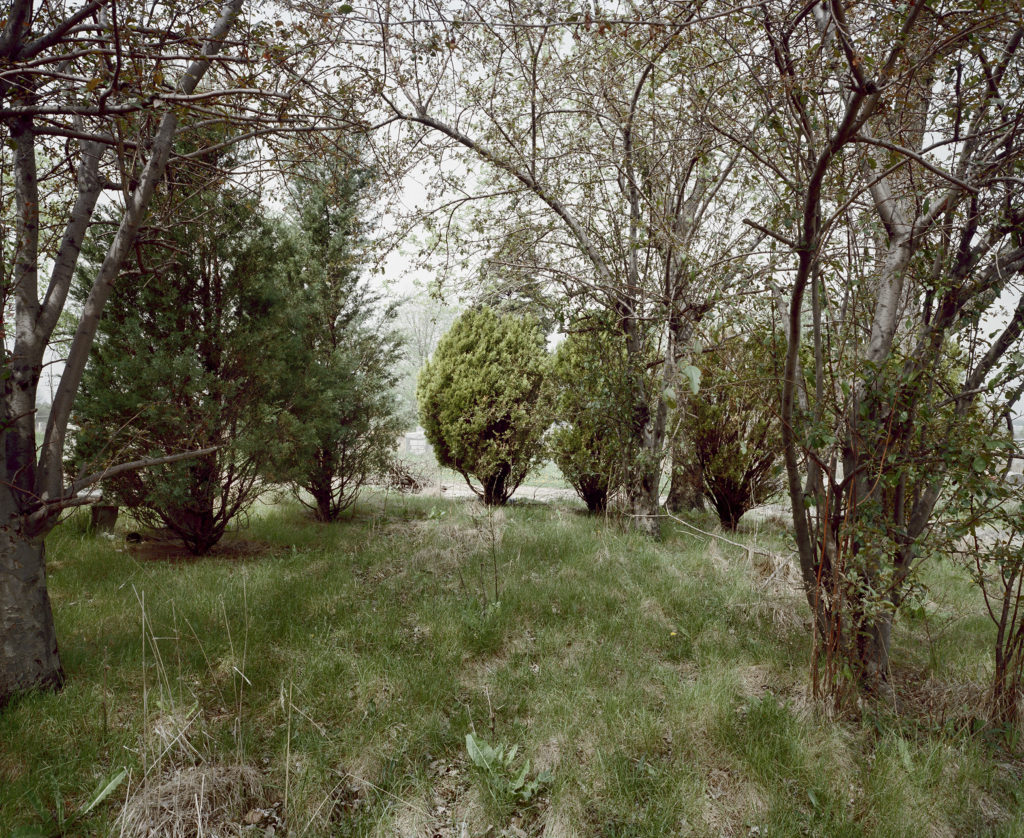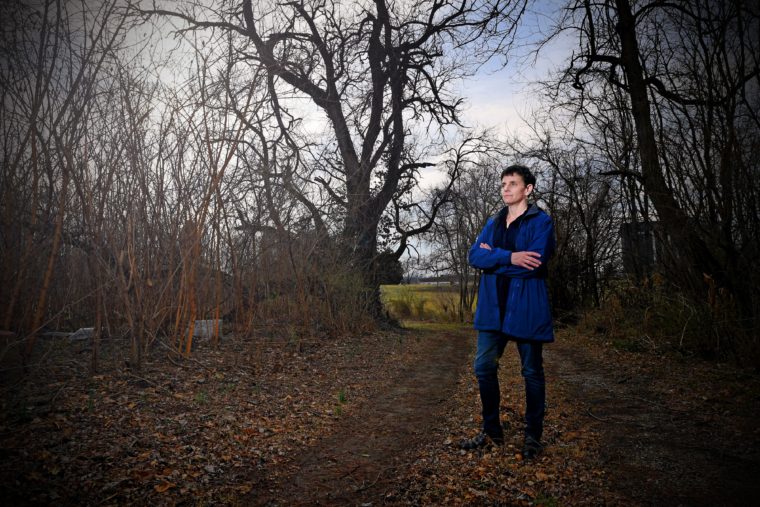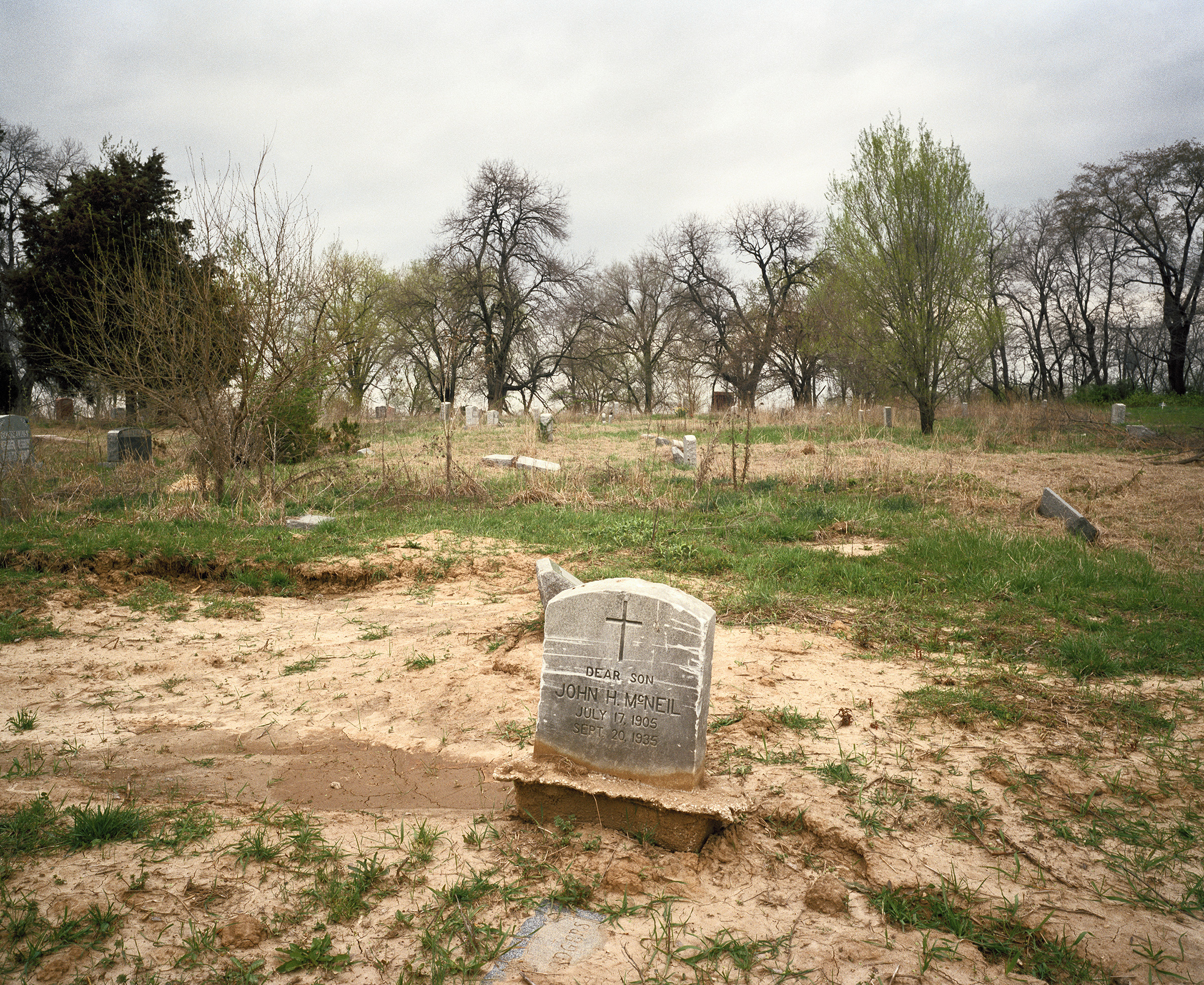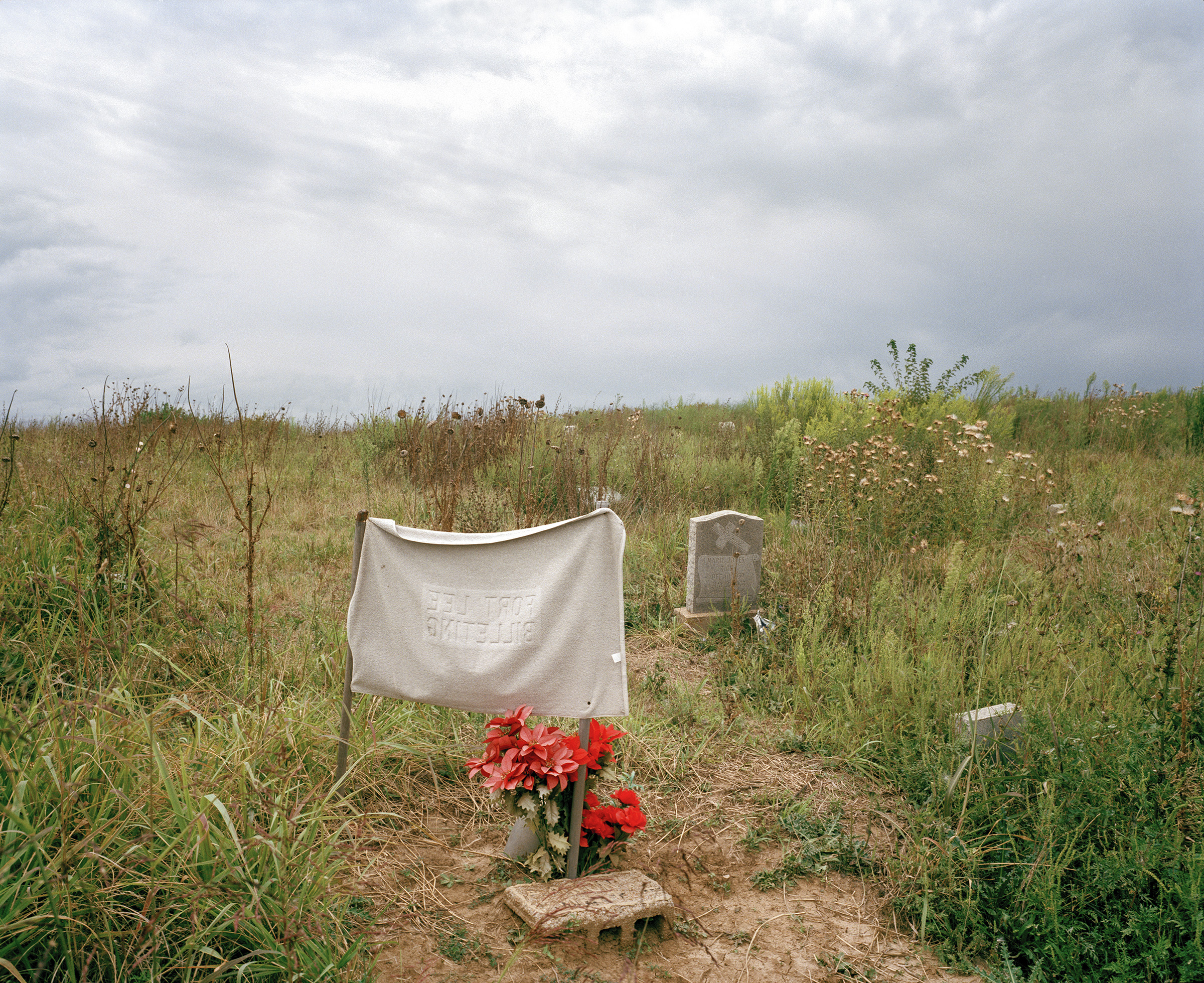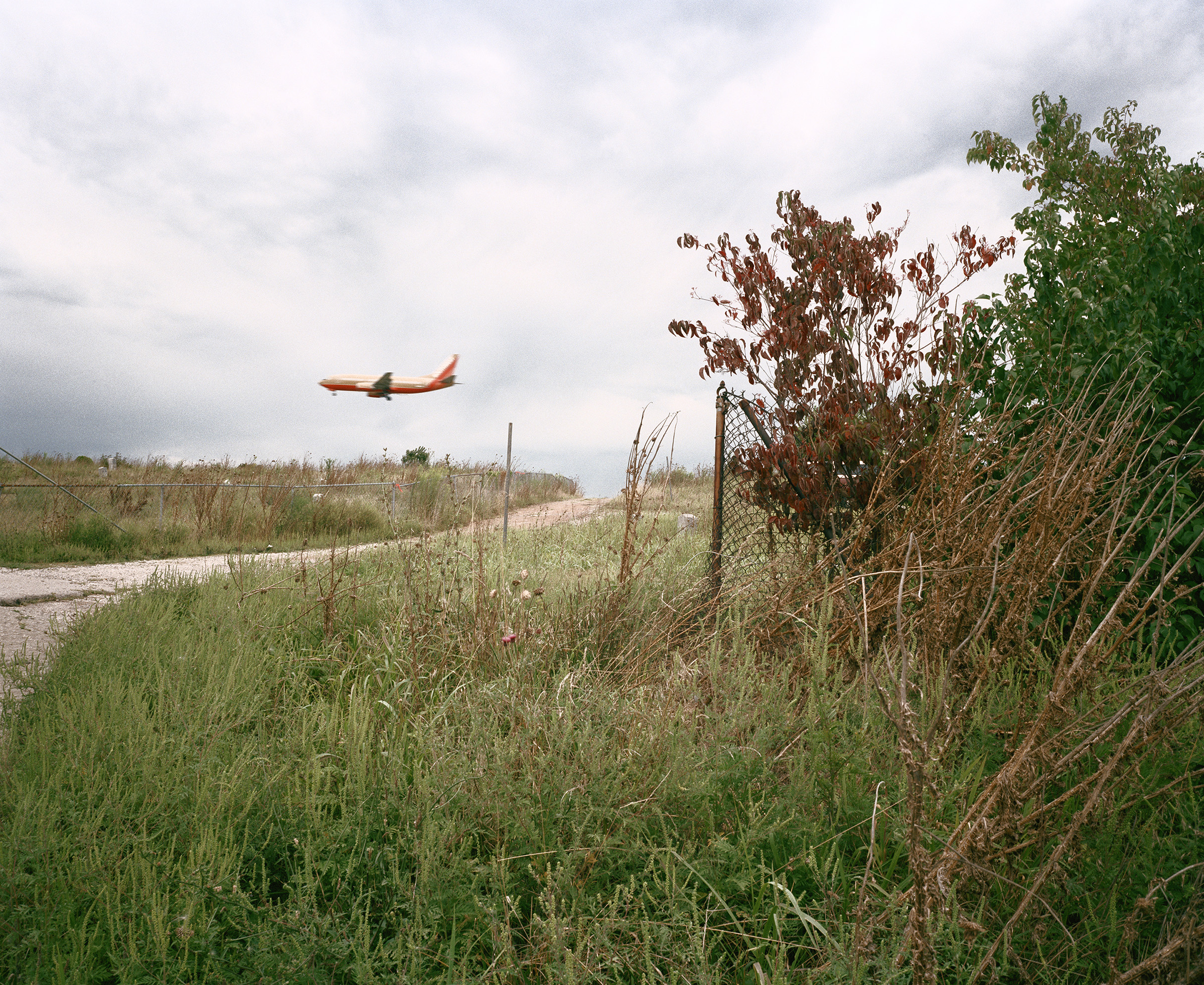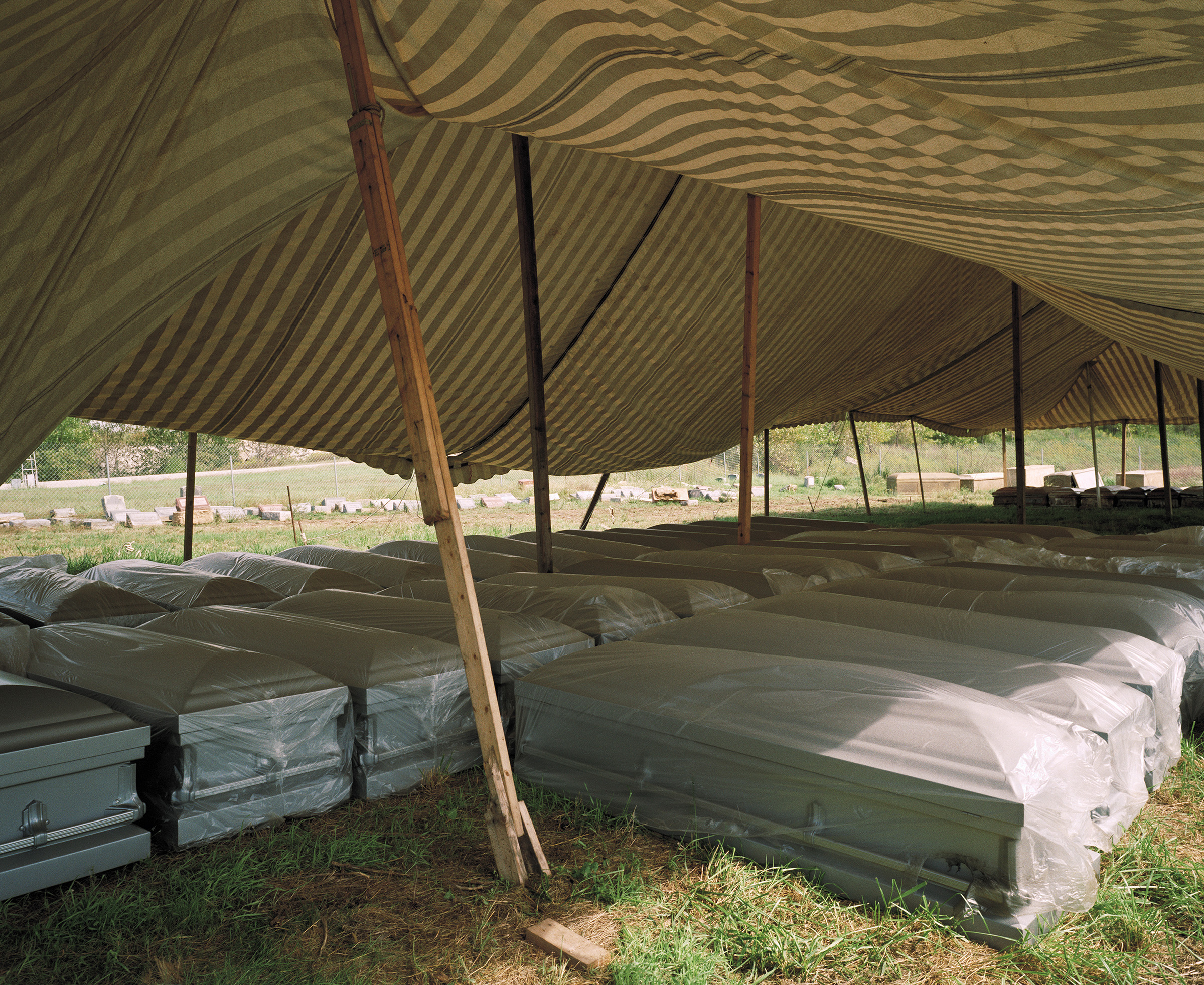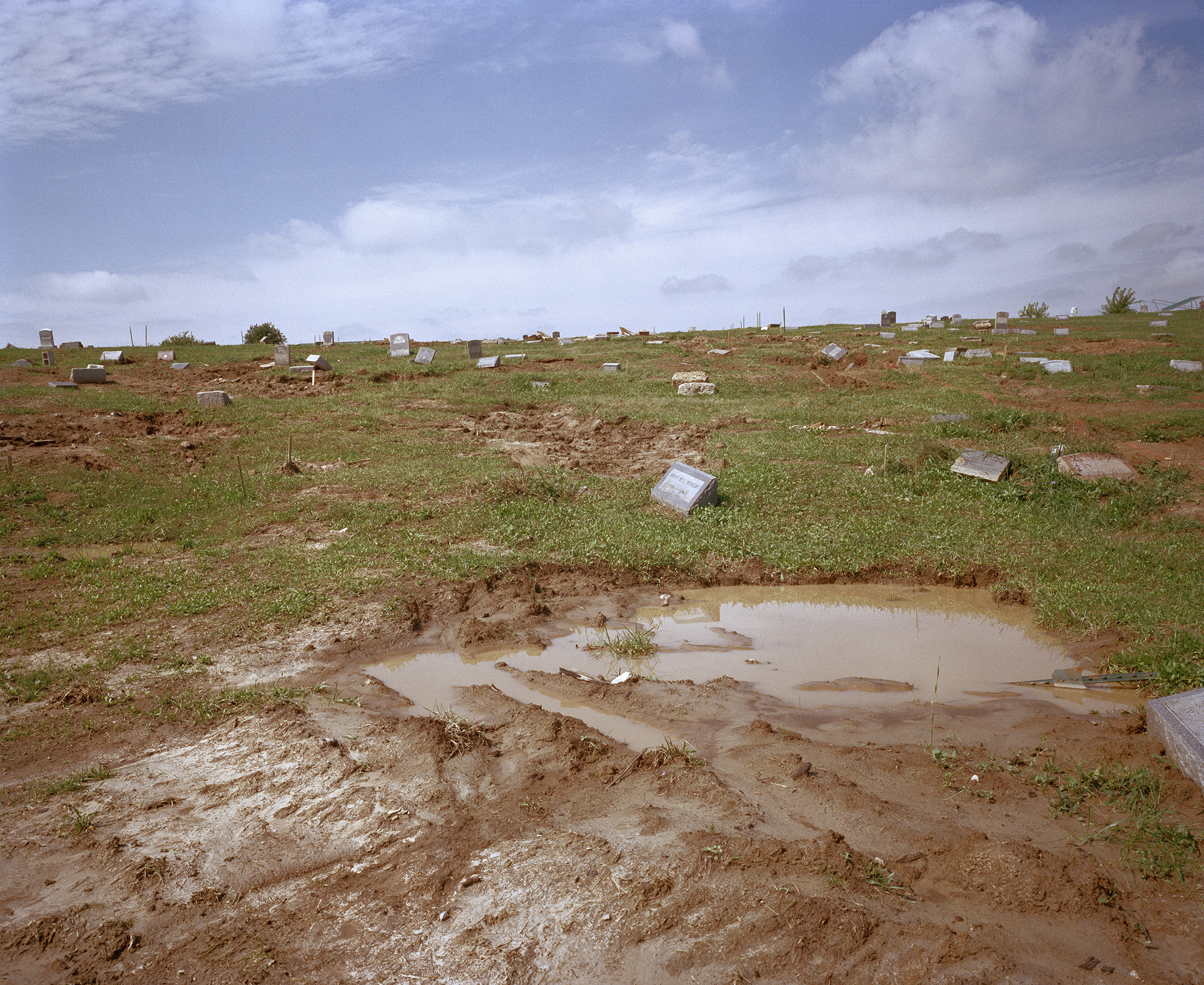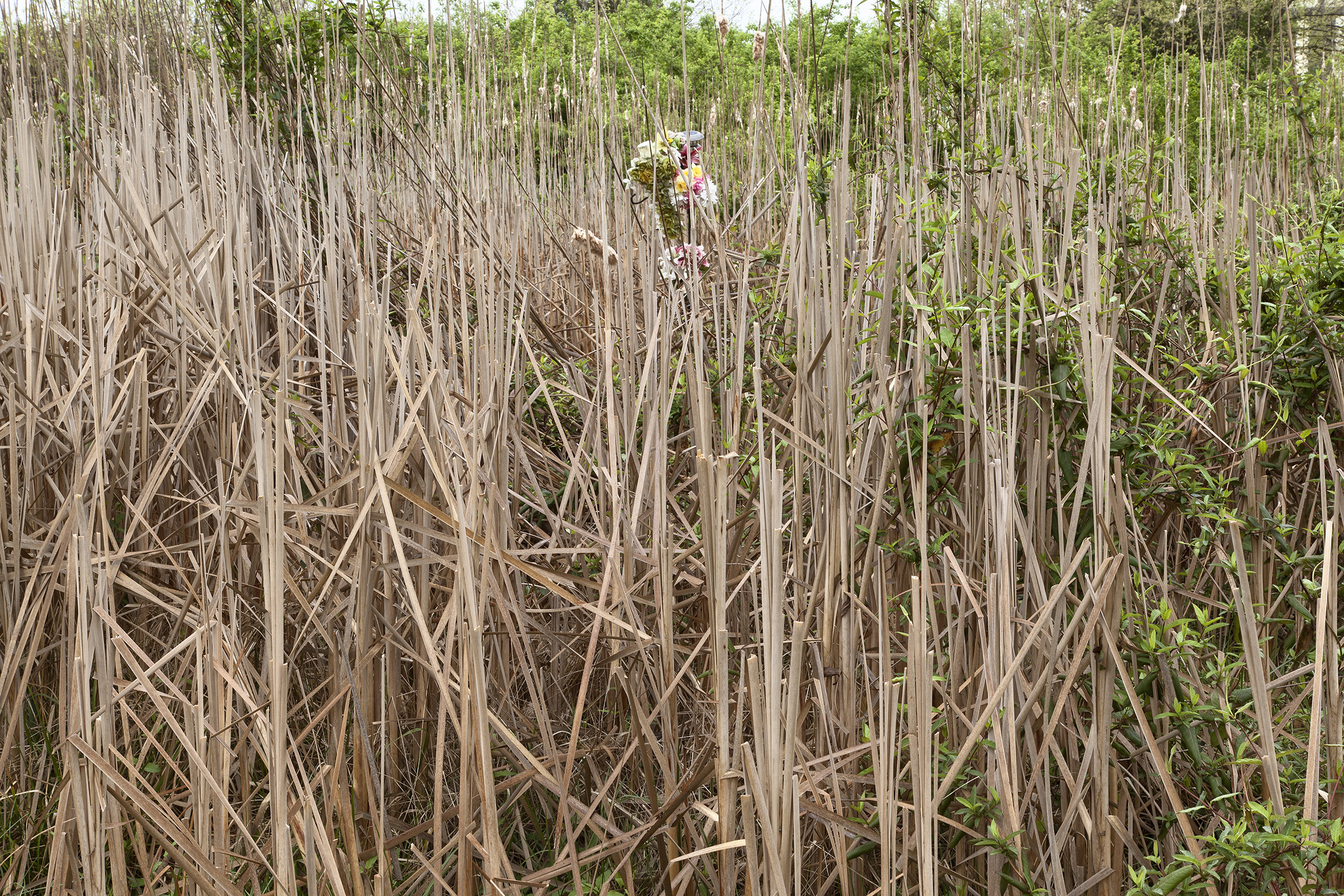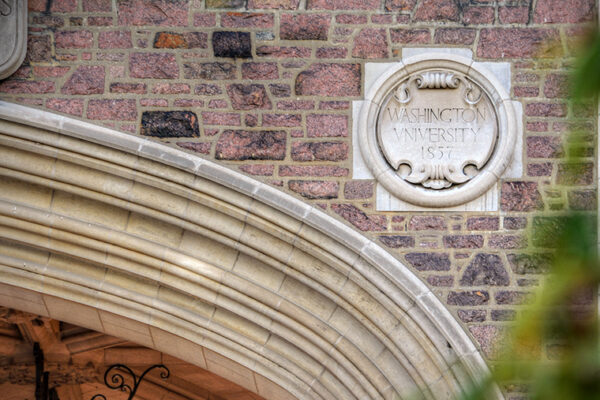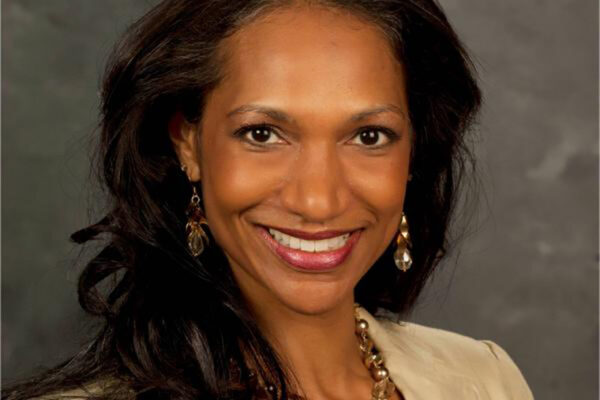A billboard looms above an untended field. White stones tumble sideways. But then it registers. The stones are graves. The conditions are shocking.
Washington Park Cemetery was once the largest African-American cemetery in the St. Louis region. Founded in 1920, its 75 acres served as the final resting place for such prominent figures as Dr. Miles Davis, Sr., father of the jazz icon, and Oscar Minor Waring, the first African-American principal of Sumner High School, among others.
But in the 1950s, Interstate 70 cleaved Washington Park in two. Subsequent development reduced the acreage by half. Today, despite the work of dedicated volunteers, the once-careful landscaping and neat rows of graves have fallen into disrepair.
“What happened to Washington Park is representative of issues that are still happening in St. Louis and around the country,” said Jennifer Colten, senior lecturer in photography in the Sam Fox School of Design & Visual Arts at Washington University in St. Louis.
“There has been an erasure of African-American history and culture,” Colten added. “And these injustices were allowed to happen because people didn’t have the power or the political voice to prevent them.”
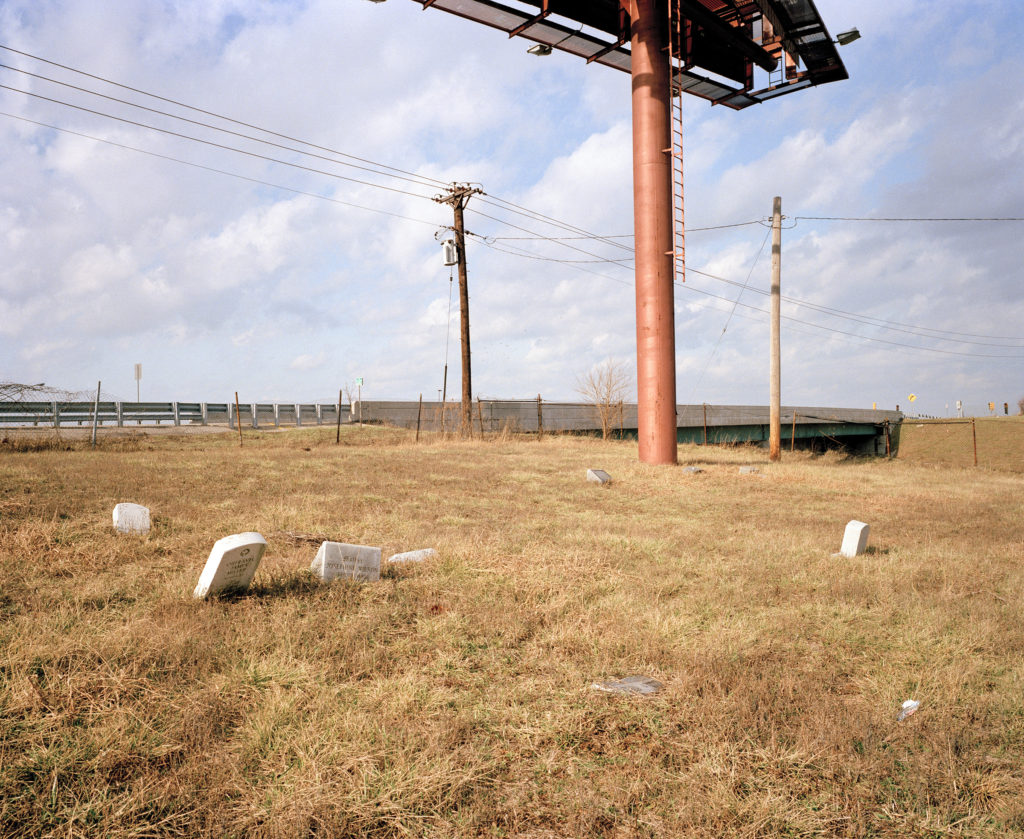
Presence and resiliency
Located in northern St. Louis County, about five miles west of Ferguson, Washington Park stretches from the eastern edge of Lambert Airport southward to Natural Bridge Road.
Colten began photographing the cemetery in 1991, shortly after joining the WashU faculty. “It’s a beautiful place,” she said. “It has tremendous presence and resiliency. You can feel the traces of history etched into the landscape.”
Indeed, Colten thinks of herself as primarily a landscape photographer, rather than a documentarian. But as she learned more of the cemetery’s troubled past, “I found a story I could not ignore. The land was not only beautiful — the real estate also happened to be very valuable.”
Over the next two years, Colten developed a portfolio of about 50 works. Some images captured Washington Park’s pastoral charms — its old trees, rolling hills and wild vegetation. Though burials here ceased in the 1980s, other images recorded the fresh flowers and handmade memorials that continued to appear at gravesides.
But Colten also captured the disruptions that have long battered the site. In one image, a gleaming jet sweeps low over a crumbling drive. In another, rows of caskets await the remains of bodies that the City of St. Louis, after purchasing substantial sections of the cemetery, disinterred to make room for MetroLink and airport expansion. In a third, the stone memorial to a previously disinterred potter’s field founders amidst the weeds and mud.
Colten was blunt. “This wouldn’t have happened to a white cemetery.”
Higher Ground
After completing the initial body of work, in 1993, Colten hoped to show her Washington Park photos in St. Louis. But the right venue never materialized, and she was reluctant to debut them elsewhere. The negatives went into storage.
Still, the cemetery never entirely left her mind. Colten returned in 2011 and 2012. In spring 2014, she won a Sam Fox School Creative Activity Research Grant, which enabled her to begin planning an exhibition. The following year she received an additional grant from the university’s Ferguson Academic Fund.
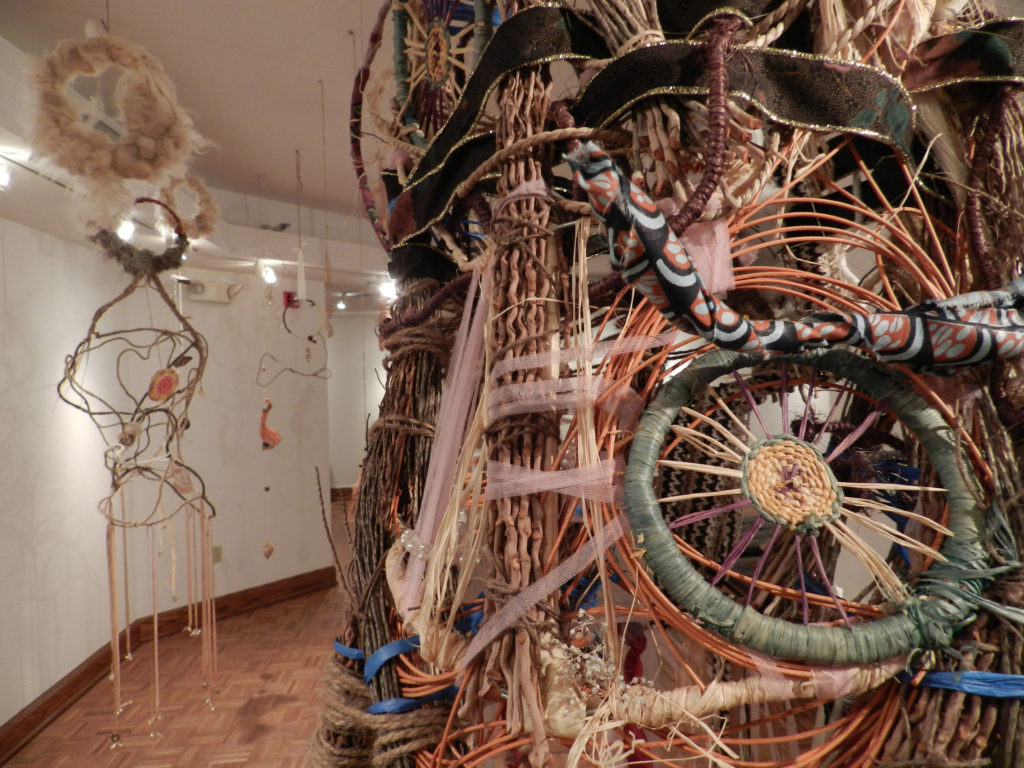
On Friday, March 3, “Higher Ground: Honoring Washington Park Cemetery, Its People and Place” will open at the Sheldon Art Galleries. The exhibition also includes works by fellow artists Denise Ward-Brown and Dail Chambers. All three will discuss their projects during a gallery talk April 7 and in a panel discussion at the Missouri History Museum May 24, among other events.
“Making this work was a pretty solitary experience,” Colten said. “But the photos are just one way of telling the story. I thought it was important to hear from other voices.”
Chambers, whose grandmother is buried in Washington Park, contributes two projects. Her sculptural installation “A Mythological Journey” — fashioned from clay, copper and found materials — references both the sense of moving through overgrown vegetation and the spirit of the people whose bodies reside there. “Sankofa: A Collective Mythology” is an animated film that chronicles the artist’s search for her grandmother’s gravesite.
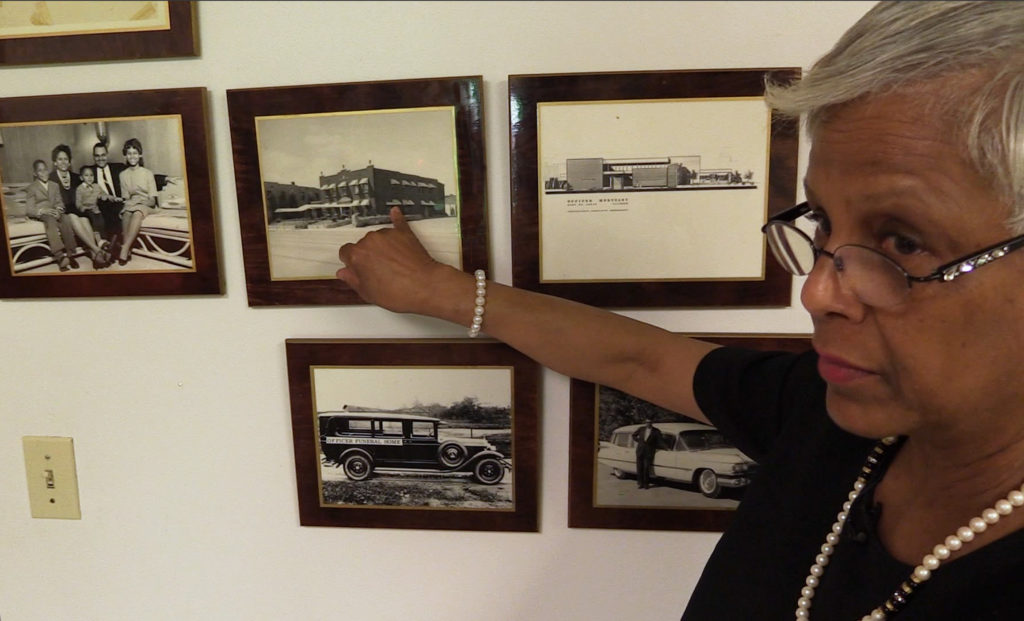
Rounding out the exhibition is “Home Going,” a set of three documentaries by Ward-Brown. The first combines images of the cemetery with footage of a concert at the Asbury United Methodist Church. The other two feature interviews with Washington Park’s current owner, who acquired the site in 2009, as well as visitors, volunteers and family descendants.
“Washington Park Cemetery is the final resting place of our collective ancestors,” said Ward-Brown, associate professor of art in the Sam Fox School. “With this exhibition, we honor their noble struggle and fight for dignity, and we recognize the unfinished mission of a perpetual-care cemetery.
“The ‘unfinished work’ here is the ongoing work to clean up Washington Park Cemetery and, metaphorically, to finish the ethical fight for equal citizenship.”
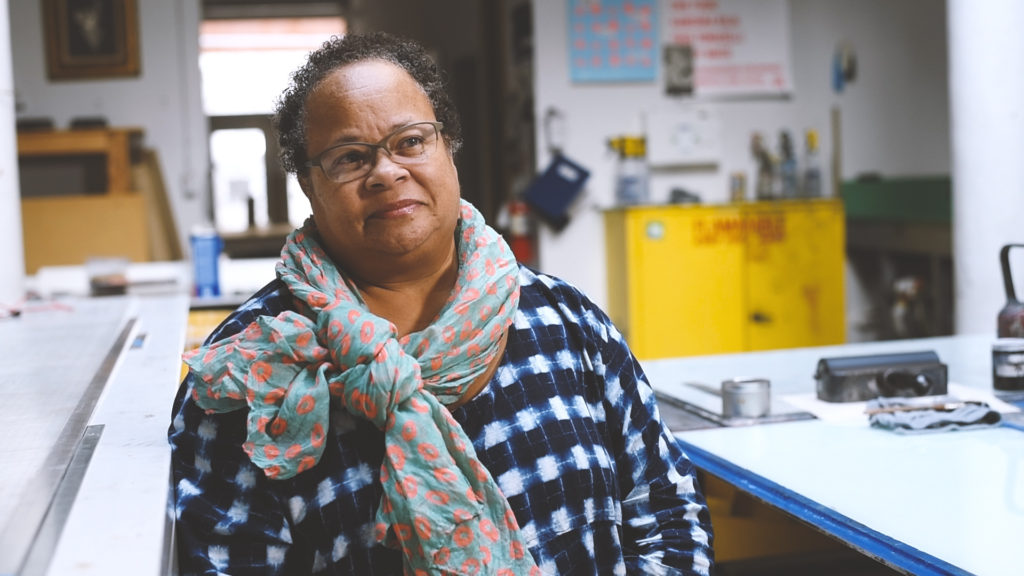
“Higher Ground: Honoring Washington Park Cemetery, Its People and Place” will open with a reception from 5 to 7 p.m. Friday, March 3, and remain on view through Aug. 26. The Sheldon Art Galleries are located in Grand Center, at 3648 Washington Blvd. For more information, visit thesheldon.org or call 314-533-9900.
A fully illustrated catalog will accompany the exhibition. The book features essays by Michael Allen, senior lecturer in landscape architecture in the Sam Fox School and lecturer in American Culture Studies in Arts & Sciences, and by landscape architect Azzurra Cox.
In addition, Washington University Libraries’ Special Collections will archive a sampling of photographs and other materials relating to the project. The Libraries’ Scholarly Publishing will create a digital exhibit on the show and Washington Park Cemetery that will launch on March 3 at digital.wustl.edu/washingtonparkcemetery, with additional content added during the run of the exhibition. The digital exhibit will continue to be available after the exhibition ends.
